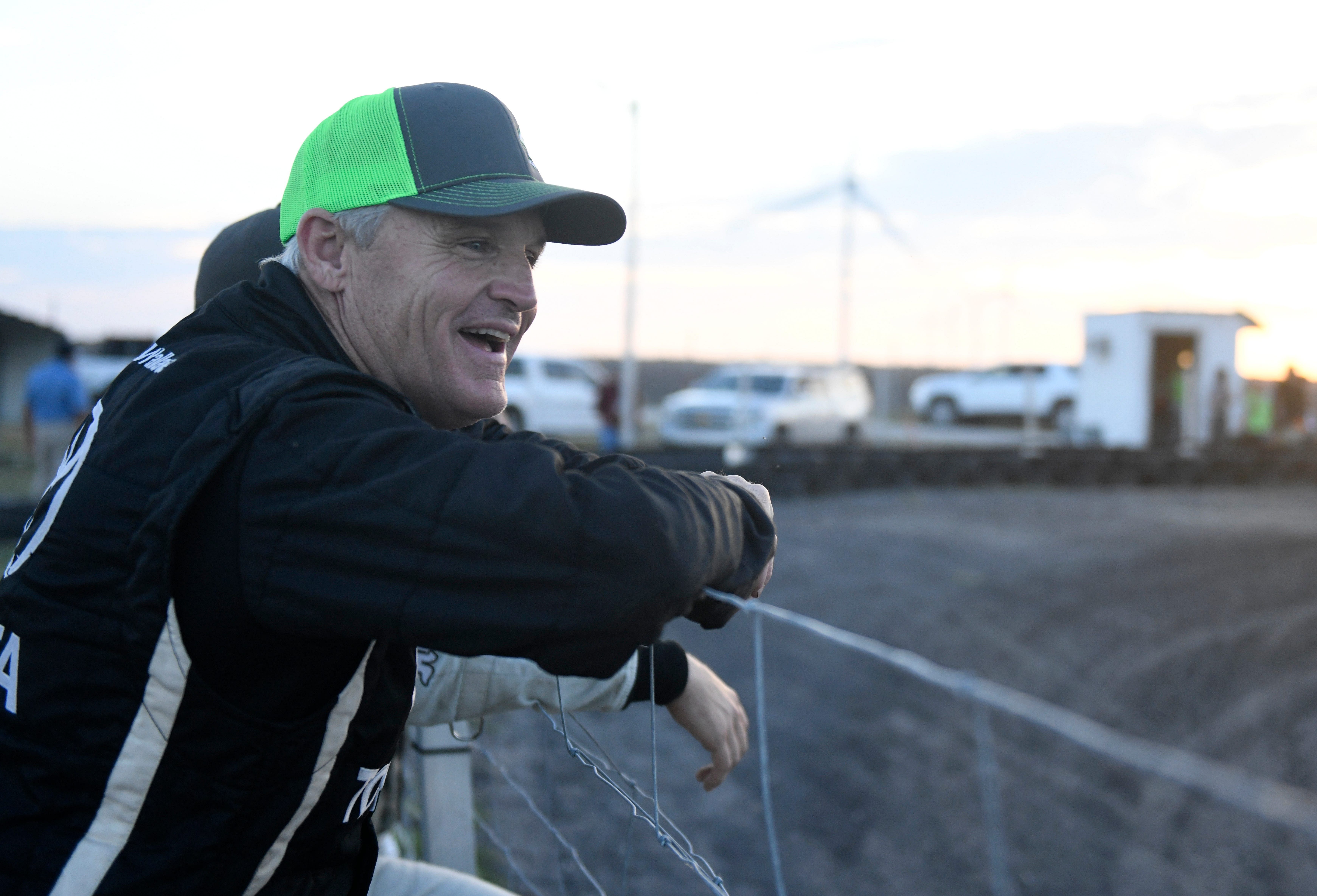DULUTH, Minn. — Surfing in Minnesota is just like surfing in Southern California, John Jenkins says, as long as you ignore the icicles on your wet suit.
Jenkins, 38, is a child of California’s Orange County. But a decade ago, looking to escape overpopulation and intensifying wildfires, he took a chance and settled in Duluth, where temperatures can dip 30 degrees below zero.
Hundreds of like-minded new residents have since joined him, coming from California, Colorado and New Mexico and changing the face of this erstwhile manufacturing town on the western edge of Lake Superior. Dubbed “climate-proof Duluth” in 2019 by Jesse Keenan, a Tulane University professor who was lecturing at Harvard at the time, Duluth has been hailed for its ample supply of freshwater, as well as its location — buffered from sea-level rise in the Upper Midwest — and temperatures, which run mild in the summer and colder than cold in the winter.
The majority of the population growth in the United States remains in the Sun Belt, where homes have traditionally been more affordable than in the north — although sky-high inflation is quickly changing the equation. But rising temperatures are becoming a factor for many buyers, and climate migration — choosing to move because of climate change — is now shifting from projection to reality. Duluth is coming to terms with its status as a refuge.
In the second half of the 20th century, Duluth’s population fell off a cliff, shrinking to about 84,000 by 2008 from nearly 107,000 in 1960. Its massive steel and cement manufacturing complex — the largest employer in the city — closed, and other factory closures followed. Grain shipments to its port slowed. By the early 1980s, the economic situation in Duluth was so grim that a billboard popped up on the highway leading out of town, bearing the message “Will the last one leaving Duluth please turn out the light?”
Today, the traffic is flowing in the other direction. Duluth saw 2,494 new residents from out of state over the past five years, according to the American Community Survey. Many came armed with cash from home sales in more expensive cities and towns, as well as a newfound ability to do their jobs remotely. Real estate agents in Duluth say that nearly every out-of-town client now mentions concerns about rising temperatures and natural disasters as a motivation for their move.
“Real estate and climate change cannot be separated,” said Shawn McCoy, a professor of real estate and economics at the University of Nevada, Las Vegas. He studies what he refers to as “the tug of war between risks and amenities” in the real estate market, and said that as knowledge of climate change increases, its influence on where people settle is growing.
Since Jenkins and his wife, Giselle Hernandez, moved to Duluth in 2014, they have built their own village of new transplants. The couple welcomed two children and then were joined by both his mother and Hernandez’s mother; his stepfather and Hernandez’s sister; and three longtime friends. All are California natives. During the long winter, when stubborn clouds can bring monthlong gray skies and 7-foot-high snowdrifts, they dabble in ice climbing and snowshoeing. And when Jenkins gets homesick for California, he climbs into his 1970 Volkswagen bus and drives with his surfboard to Lake Superior, where, thanks to winter winds, the frigid waves are at their biggest between November and February.
“My decision wasn’t based on just one thing, but climate was a big one,” Jenkins said of choosing Duluth. “It’s safer here.”
He now owns and runs a local restaurant, New London Cafe, where diners gather around wood tables crafted from repurposed pickle barrels and can order menu items such as breakfast burritos and huevos rancheros. His wife and sister co-own a cafe and juice bar, Juice Pharm, which is Duluth’s first vegan restaurant.
“We tried to bring California with us here,” Jenkins said.
They own investment property, too: In addition to his four-bedroom, two-bath home, which he and Hernandez bought in 2017 for $210,000, he also collects rent on eight rental properties, consisting of 18 housing units. He asks between $900 and $1,400 for a two-bedroom apartment.
“When we came out here, it was literally the beginning of the boom,” he said of Duluth’s real estate market, where the median sales price of homes grew 9% between December 2021 and December 2022, compared with 2.3% nationwide. About 22% of those sales were all cash, according to data from Lake Superior Area Realtors, a local realty company.
He said that despite the cold — and the chunks of ice he has to navigate when surfing — he has no regrets. “We still visit California, but whenever we’re away, we always just think, man, it’s gonna be so nice to just go back home to Duluth,” he said.
For other new residents, the transition hasn’t come so easily.
“Duluth is the city that keeps getting named,” said Karen Pagel Guerndt, a Duluth native and local real estate agent who estimates that 25% to 30% of her clients now come from out of state. Ten years ago, she said, that number was less than 2%. “In some ways, they describe us as this big utopia. But we have lots of cloudy days, a lot of cold weather and a lot of snow. For many people, that’s not always perfect.”
Amy Thomas, 48, is one of them. She grew up in Duluth, but for nearly 30 years, she lived in Colorado, growing used to winter sunshine. She and her wife, Jess Meyer, are avid mountain bikers, and in September 2020, Meyer developed exercise-induced asthma from cycling outdoors in air tinged with wildfire smoke.
They decided to leave Denver, setting their sites on Durango, Colorado, a small city near the New Mexico state line. They sold their home for $565,000 and purchased a plot of land. But before they could build, a different wildfire tore through their property.
Thomas decided it was time to return home to Duluth.
The couple bought a home for $338,000 and say they love Duluth’s local cycling community, as well as the proximity to environmental treasures such as the Boundary Waters. But it has been harder than Thomas anticipated to make lasting friends.
“Those friends in Colorado were my family,” she said. “I underestimated that.”
For Jamie Beck Alexander, 40, there have also been challenges. She never planned to come to Duluth, but in the summer of 2020, exhausted from COVID-19 lockdowns, she and her husband and two children, now 5 and 7, rented a camper van and drove east from San Francisco. They were in southern Minnesota when they saw pictures of the sky in Northern California, which was turning apocalyptic orange from wildfires.
“That was the point when we said, wow, maybe we won’t go back,” said Alexander. Climate adaptation is familiar to her — she is the director of Drawdown Labs, a nonprofit that works with tech companies on climate solutions. So she admits she kicked herself a little when, a year after settling in Duluth, wildfire smoke blowing across the border from Canada created air quality too poor to go outside.
“We moved here with a Pollyannish idea that we were moving to safety,” she said. “But as someone who works in climate change, I know that planet systems are connected. You cannot pick up one part of the world and separate it from the rest of the planet.”
Despite a rough adjustment, Alexander said she and her children are happy now in Duluth, in large part to the culture of “Minnesota nice” — a widespread politeness and friendliness that is a local point of pride. Indeed, in dozens of interviews, longtime Duluth locals insisted that the newcomers to their city were warmly welcomed, even if their presence was driving up real estate costs across the board.
“These folks are coming from places where they sold their home for maybe a million dollars, or the high hundreds of thousands, and they come out here and think nothing of it. But Duluth is enhanced by the money coming in,” said Steve Marshall, 60, whose family-owned hardware store, Marshall Hardware, has been a community fixture since 1939. The cash register used by his grandfather still sits on the counter. “It’s great to see the community getting vibrant, and also there’s new food coming in. It’s not just hamburgers anymore.”
Even as they welcome the newcomers to their city, however, longtime residents are feeling the pinch of rising prices.
“I’m glad that people find value in Duluth. It’s a beautiful place. But I still long for the days when housing prices were reasonable,” said Lynne Maine, 56, an occupational therapist who grew up in Duluth. She has three children, ages 27, 23 and 17, and worries about their ability to now buy a house in their hometown.
“It hurts my heart,” she said. “I want my kids to be able to get their foot in the door and establish a homestead, and then potentially buy a bigger house when they get married and have kids. But it doesn’t seem like they can even afford that first house.”
Duluth is not the only city in America that’s been branded a climate refuge, and others, such as Buffalo, New York, have leaned into the label with outreach and marketing campaigns. But in Duluth, Mayor Emily Larson is distancing herself from the idea.
“The idea that we are so ignoring the needs of our planet that people have to move is terrifying. It’s dystopian,” she said in an interview at Duluth’s city hall, a grand, cavernous granite building with Doric columns and arched windows. Built in 1928 as part of a beaux-arts civic center, it sits in the heart of Duluth’s now-blighted downtown, where cocktail bars and coworking spaces form a checkerboard with abandoned storefronts. “I don’t want to prey on that.”
Larson, the city’s first female mayor, is in her second term and has made sustainability initiatives — reducing the city’s greenhouse gas emissions; investing in solar power — a cornerstone of her administration. She estimates that Duluth, whose current population is shy of 87,000 people, has infrastructure to accommodate 130,000. But its housing stock is aging, and limited — affordable housing is scarce, and in 2021, its rental housing vacancy rate was a mere 2%.
Before inviting an influx of new residents, Larson said, the city needs to build for its current ones, or as she put it, “put our own oxygen mask on first.” They need to create more multifamily units, she said, and rehab many of the city’s older structures that are in disrepair.
“People need climate refuge, but there’s the potential of a seismic conflict. So far, we’re navigating it,” she said.
















